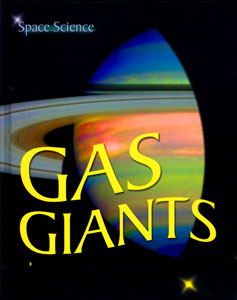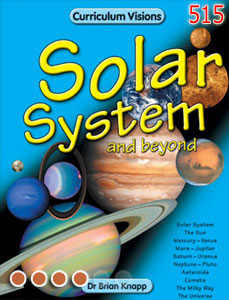This giant planet orbits the Sun once every 29 years at a distance of 1.4 billion kilometres. It spins on its axis once every 10.6 hrs. It is about a third as massive as Jupiter (100 times as massive and nearly 800 times the volume of the Earth).
It has a small rock core surrounded by an enormously thick layer of metallic and liquid hydrogen, which in turn is surrounded by a hydrogen-helium atmosphere.
Saturn's most striking features – which can be seen even with a low power telescope – are the dust bands, or rings, that surround its equator. They are composed of dust, chunks of ice and rock. Some of the rocks are the size of an armchair.
Saturn has more moons than any other planet, the largest of which is Titan.






